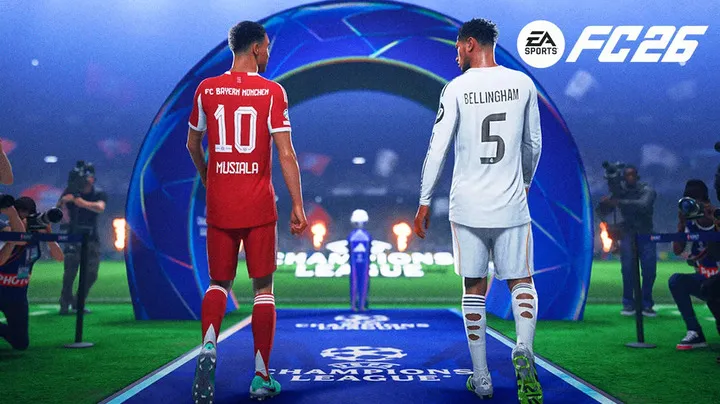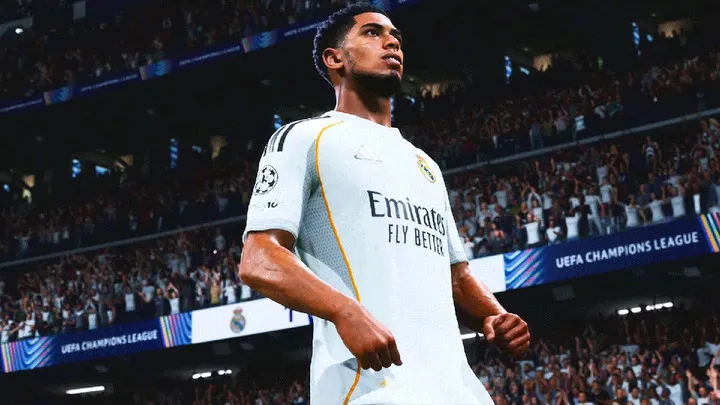Career Mode in EA Sports FC 26 has once again raised the bar in football simulation. While many players focus on transfers, match tactics, or club management, the heart of any career lies in player development. How a young prospect transforms into a global superstar is influenced by a complex web of training schedules, tactical decisions, match time, and even morale. This article dives deeply into the mechanics, progression, and hidden layers behind player growth in FC 26 Career Mode, dissecting every element step by step.

Early Steps: Understanding Youth Academy Potential
Every journey begins in the Youth Academy, where scouting networks define the foundation of future stars. In FC 26, scouts can now provide detailed reports beyond overall potential, such as mentality traits, stamina endurance, and positional adaptability. These small indicators often reveal whether a player will thrive under heavy training loads or stagnate.
Many managers make the mistake of only focusing on the "Potential Rating" range. Instead, the real secret is identifying balanced prospects. For example, a winger with raw speed but poor stamina may dominate early but fade quickly. Conversely, a central midfielder with average stats but high consistency traits could evolve into a reliable core player over several seasons.
Scouting Specialties
- Physically Gifted: Strong acceleration, sprint speed, and jumping—best for fast-paced leagues.
- Playmakers: High vision, passing, and ball control—ideal for possession-heavy systems.
- Leaders: Mentality boosts, high work rate, and composure—valuable for captaincy.
Training Regimens: Balancing Growth and Fatigue
Once prospects enter the squad, training schedules become the core engine of development. FC 26 introduces new micro-management mechanics where intensity directly affects performance and fatigue. High-intensity drills accelerate growth but risk injury or stamina collapse across the season.
The trick is balance. Young players benefit from heavy workloads in pre-season but need tapering as competitive fixtures pile up. Monitoring their fitness chart weekly is essential. Overtraining diminishes long-term potential, while under-training leads to stagnation.
Types of Training Sessions
- Technical Drills: Passing accuracy, ball control, finishing.
- Physical Drills: Sprinting, stamina, strength.
- Tactical Drills: Defensive positioning, pressing structures, awareness.
Managers should rotate these to ensure well-rounded growth, avoiding the trap of over-specializing too early.
Match Time vs. Simulated Growth
Nothing replaces match experience. In FC 26, actual minutes on the pitch contribute more significantly to growth than simulated drills. However, not all match time is equal. A player who enters a match as a 90th-minute substitute sees little benefit compared to someone who plays a full half.

The new Dynamic Growth Modifier introduced in FC 26 factors in difficulty level, opponent strength, and player contribution. For example, scoring against Real Madrid in a Champions League match accelerates growth more than a routine league game against a mid-table side.
This makes loan decisions more critical than ever. Sending a 19-year-old striker to a competitive but balanced league like the Eredivisie often yields better development than benching them in the Premier League.
Morale and Personality Traits
Morale is no longer just a side feature. In FC 26, it directly influences training output, match sharpness, and even stat progression. Players with high morale grow faster and adapt more easily to tactical instructions. Conversely, frustrated or unsettled players plateau, no matter how much you train them.
Personality Archetypes
- Driven Leaders: Thrive under pressure, grow steadily even during tough spells.
- Confidence Players: Rapid growth when morale is high but collapse after poor form.
- Steady Workers: Balanced growth regardless of external conditions.
Understanding a player’s personality type allows managers to tailor strategies—some require constant encouragement, while others need only consistent minutes.
Position Training and Role Adaptation
FC 26 expands positional training, allowing players to learn hybrid roles more fluidly. For example, full-backs can be converted into inverted playmakers, or midfielders into advanced forwards. This flexibility ensures squad depth and unique tactical setups.
However, adaptation time varies. Young players adapt faster, while older veterans struggle. A 17-year-old winger can switch to full-back within a season, but a 27-year-old striker attempting to become a midfielder may see stalled progress.
Key Role Adaptations
- CB → CDM: Adds passing range while retaining defensive solidity.
- LW → CAM: Creates dynamic attacking transitions.
- RB → RM: Enhances width and attacking overlap options.
Tactical Systems and Player Growth
Player development thrives when aligned with team tactics. A possession-based system benefits technical midfielders, while counter-attacking setups accelerate pace-oriented wingers. FC 26 introduces Tactical Synergy Bonuses, where consistent tactical use unlocks hidden growth boosts.
For instance, a striker consistently used in a pressing system improves stamina and positioning faster than if rotated in multiple tactical formations. Managers must therefore think long-term—sticking to a defined philosophy enhances growth trajectories.
Injuries and Recovery Management
Injuries remain one of the greatest threats to development. In FC 26, long-term injuries not only reduce current attributes but also lower maximum potential growth. Recovery plans must be managed carefully: rushing players back risks permanent stat drops.

Medical staff upgrades in Career Mode now influence recovery times. Investing in physiotherapists early pays dividends in maintaining long-term player development. Additionally, mental recovery—confidence after injury—is tracked more explicitly. Players returning too soon may underperform until they regain match sharpness.
Contract Negotiations and Growth Incentives
Career progression isn’t only about training—it’s about contracts. In FC 26, salary satisfaction impacts morale, and morale influences growth. Offering fair contracts to rising stars ensures steady improvement.
Furthermore, new Performance Clauses (goals, clean sheets, appearances) motivate players. When met, these clauses accelerate morale boosts, indirectly driving faster growth. Managers must balance finances with development incentives, ensuring the squad remains both stable and motivated.
Peak Performance and Decline Curve
Understanding when players peak is critical. In FC 26, peak performance windows differ across positions. Goalkeepers and defenders often peak later, while strikers reach their prime earlier but decline faster.
General Peak Ages
- Strikers/Wingers: 24–28 years
- Midfielders: 26–30 years
- Defenders/Goalkeepers: 28–34 years
After this window, decline is inevitable. However, proper load management can slow down regression. Veteran players used sparingly, with tactical adjustments, maintain competitiveness longer than those overexposed.
Long-Term Legacy: From Academy to Club Icons
The ultimate goal of development in FC 26 is building legacies. Turning a 16-year-old unknown academy graduate into a club captain across 15 seasons is one of the most rewarding experiences Career Mode offers.

Legacy isn’t just about stats. It’s about milestones—breaking appearance records, winning trophies, leading in assists. These achievements elevate a player from just another squad member to a true icon. In FC 26, narrative cutscenes and commentary reflect these milestones, creating an immersive sense of history being made.
Conclusion
Player development in EA Sports FC 26 is not a simple formula—it’s a living ecosystem. From scouting in the Youth Academy, through training regimens, morale management, tactical alignment, and legacy building, every decision shapes a player’s journey. Success requires patience, foresight, and adaptability. The difference between an average squad and a dynasty lies not in flashy signings but in the carefully nurtured careers of young talents.
For managers seeking mastery, the key is balance: balancing training with fatigue, match time with morale, finances with motivation, and short-term wins with long-term growth. In doing so, one can transform raw talent into legends that define not only a team but an era of football within FC 26.

















